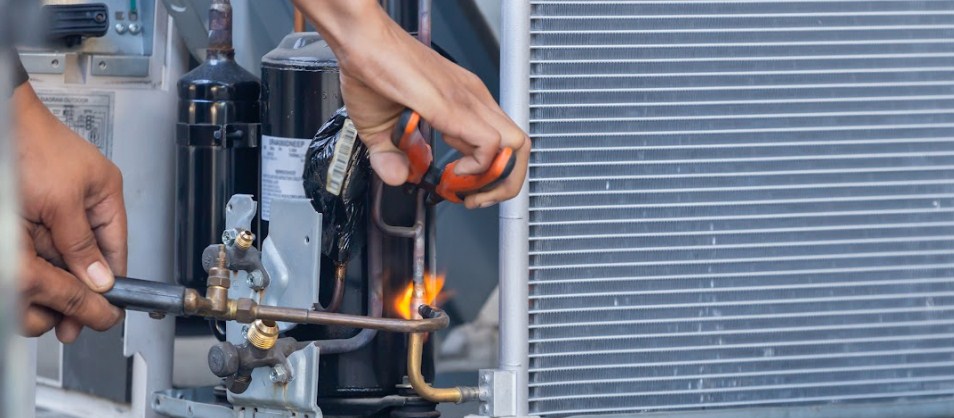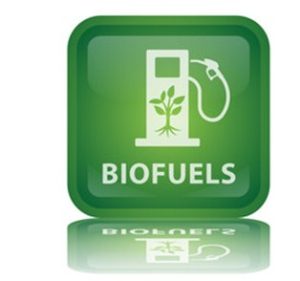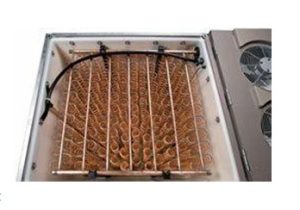
Rising energy prices, greenhouse gasses, and government regulations are driving heating and cooling manufacturers to go greener. As a result, they are producing more alternative systems that operate at less cost and reduce air pollution. Both residential and commercial users are taking advantage of these systems as they become available at more affordable prices.
Having an awareness of these new approaches to heating and cooling provides more career ideas and choices for HVACR technicians. The following ways of going greener should be appealing to those planning to work in this industry.
Active and Passive Solar Power Are Coming to the Forefront
 Active and passive solar power is used to produce electricity to operate conventional HVAC systems and is becoming increasingly popular. It’s typically achieved by adding solar cells to:
Active and passive solar power is used to produce electricity to operate conventional HVAC systems and is becoming increasingly popular. It’s typically achieved by adding solar cells to:
- Roofs
- Ground frames
- Poles
The photovoltaic cells convert sunlight directly into electricity for heating, cooling, and lighting homes, farms, businesses, and government facilities. Less expensive systems are available that use water, other liquids, and air to absorb the sun’s energy, collect it, and transfer the heat into storage systems.
Passive solar power use is also on the rise, and it will be around for a long time. It works by:
- Walls, windows, and floors absorb heat and release it back into homes
- Joining with mechanical and electrical equipment to supplement heat and cool homes
- Installing plastic or metal water pipes inside walls that heat water and pumping it throughout the house for heating
Wind Power Is Another Green Winner
We’ve all seen giant windmills on top of tall poles and towers for producing electrical power. Like solar energy, the wind is used to operate heating and cooling systems as well as pump water. Wind turbine generators can create heat without electrical heating elements or flames. With further effective development, they will be able to provide continuous hot water and heating for homes and businesses.
Many of today’s HVACR technicians are trained to install, maintain, and repair solar and wind-powered systems. As these two methods of generating power become more common, techs will see their everyday use throughout much of the U.S.
Biodiesel and Biofuels Release Fewer Pollutants Into the Air
 Another way to go green with HVAC systems is using the same biodiesel fuel as trucks and tractors. Biodiesel is an alternative fuel for fuel oil because it is currently less expensive and can be used in oil heating furnaces.
Another way to go green with HVAC systems is using the same biodiesel fuel as trucks and tractors. Biodiesel is an alternative fuel for fuel oil because it is currently less expensive and can be used in oil heating furnaces.
Biodiesel fuel reduces carbon dioxide pollution such as greenhouse gasses. Other biofuels that are sustainable are made from natural products, such as:
- Corn
- Soybeans
- Sugarcane
- Wheat
The natural energy crops will come into more extensive use as biodiesel fuel manufacturers and distributors reach maximum capacity.
“Rising energy prices, greenhouse gasses, and government regulations are driving heating and cooling manufacturers to go greener. As a result, they are producing more alternative systems that operate at less cost for residential and commercial users.”
Ice-powered Air Conditioners Are Catching On
Most of us are probably not aware of a relatively new system that converts water to ice that runs an air conditioning unit. These systems reduce electric bills by making ice at night that cools an AC unit’s refrigerant the next day.
As the water turns to ice, it is stored for the next day’s use as the temperature rises. The ice cools the refrigerant instead of the AC unit’s compressor doing the work. This not only works well but can reduce energy consumption by about 30 percent.
Hydronic Heating Uses Hot Liquids to Warm Homes
 HVAC technicians use hydronic heating systems to warm homes and businesses by sending hot water through a circuit of pipes. Solar and geothermal energy heats water or antifreeze in boilers that are pumped through pipes to each area that needs heating.
HVAC technicians use hydronic heating systems to warm homes and businesses by sending hot water through a circuit of pipes. Solar and geothermal energy heats water or antifreeze in boilers that are pumped through pipes to each area that needs heating.
The liquids are passed through a heat exchanger such as a radiator in one of three ways:
- Conduction
- Convection
- Radiation
Each method has its advantages and costs for home and business owners to match with their situations. A bonus is that hydronic heating supplies are adding moisture into the air and creating a healthier environment.
A College Degree Is the Key for Your Future Career
Anyone interested in a career in HVACR working with green technology as well as conventional equipment and systems should earn a college degree. An excellent training program is offered by ITI Technical College in Baton Rouge.
Our Associate of Occupational Studies (AOS) Degree in the Air Conditioning, Refrigeration, and Electrical Technology Program lays the foundation for an entry-level job. This growing industry needs many new qualified technicians nationwide. An associate degree will open many doors for your future.
For more information about graduation rates, the median debt of students who completed the program, and other important information, please visit our website at:

